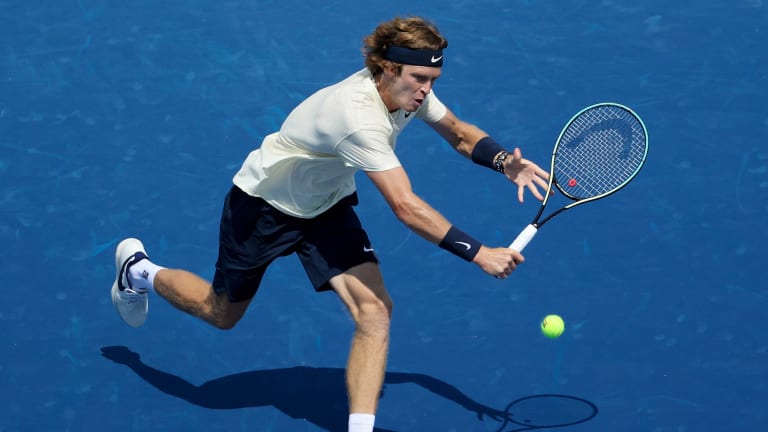Cincinnati, USA
Rublev answers Paire's questions to arrange Cincinnati "chess match" with Medvedev
By Aug 20, 2021Cincinnati, USA
Aryna Sabalenka and Jannik Sinner reclaimed their early-season form at the Cincinnati Open
By Aug 20, 2024Cincinnati, USA
Jannik Sinner defeats American Frances Tiafoe to capture fifth title of the year in Cincinnati
By Aug 19, 2024Cincinnati, USA
Frances Tiafoe reaches biggest final of career in Cincinnati after comeback victory over Rune
By Aug 19, 2024Cincinnati, USA
Preview: Aryna Sabalenka, Iga Swiatek face off in 2024 Cincinnati Open semifinal
By Aug 17, 2024Cincinnati, USA
Holger Rune embraces adaptability through tumultuous season in Cincinnati
By Aug 17, 2024Cincinnati, USA
Jannik Sinner clinches Andrey Rublev revenge in Cincinnati quarterfinal rematch
By Aug 17, 2024Cincinnati, USA
Iga Swiatek solves teen phenom Mirra Andreeva, returns to Cincinnati Open semifinals
By Aug 17, 2024Cincinnati, USA
On Cincy’s “casino” courts, can Andrey Rublev strike gold again in Jannik Sinner rematch?
By Aug 16, 2024Cincinnati, USA
Frustrated Carlos Alcaraz calls Cincinnati Open loss to Gaël Monfils "worst match I ever played"
By Aug 16, 2024Rublev answers Paire's questions to arrange Cincinnati "chess match" with Medvedev
The No. 4 seed closed with a pair of aces to finish off the Frenchman, 6-2, 3-6, 6-3, in Friday's Western & Southern Open quarterfinals.
Published Aug 20, 2021
Advertising
Advertising

Rublev is now 40-13 this season.
© Getty Images